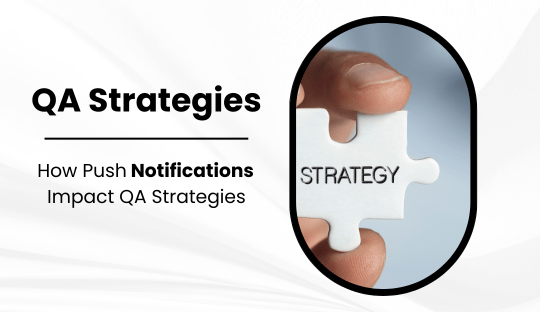
How Push Notifications Impact QA Strategies
In the dynamic world of web and mobile applications, push notifications play a crucial role in user engagement and retention. For Flykez CO, a creative brand company in Finland, understanding the impact of push notifications on QA strategies is essential for delivering high-quality digital experiences. This blog post explores the significance of push notifications in QA testing and provides insights into how to effectively incorporate them into your testing strategy.
The Importance of Push Notifications
Push notifications are a powerful tool for communicating with users. They help keep users informed about updates, reminders, and promotions, thereby enhancing user engagement and retention. However, the implementation of push notifications must be handled carefully to avoid disrupting the user experience or causing technical issues.
Key Benefits:
- User Engagement: Push notifications can significantly increase user engagement by providing timely and relevant information.
- User Retention: Regular notifications can help retain users by keeping them informed and engaged with the app.
- Real-Time Communication: Push notifications enable real-time communication with users, which is crucial for time-sensitive information.
QA Testing Trends 2024: Focus on Push Notifications
In 2024, QA testing trends emphasize the importance of comprehensive testing for push notifications. This involves not only functional testing but also performance, usability, and security testing to ensure notifications are delivered seamlessly and securely. Also Read About Top QA Testing Trends to Watch in 2024
Key Trends:
- Hybrid Testing Models: Combining automated and manual testing to cover all aspects of push notifications.
- Mobile Testing with 5G: Leveraging the speed and capabilities of 5G to test push notifications on mobile devices more effectively.
- Multi-Device Testing: Ensuring push notifications work consistently across different devices and platforms.
Key Components of Push Notification Testing
To effectively test push notifications, QA teams should focus on several key components:
1. Functional Testing
Functional testing ensures that push notifications work as intended. This includes verifying that notifications are sent, received, and displayed correctly.
Steps:
- Triggering Events: Test the events that trigger notifications to ensure they are firing correctly.
- Notification Content: Verify the content of the notification, including text, images, and links.
- Action Responses: Test the actions users can take from the notification, such as opening the app or dismissing the notification.
2. Performance Testing
Performance testing evaluates the speed and reliability of push notifications. It ensures that notifications are delivered promptly and without errors.
Steps:
- Latency Testing: Measure the time it takes for notifications to be delivered after the triggering event.
- Load Testing: Test the system’s ability to handle a high volume of notifications simultaneously.
- Network Conditions: Test notifications under different network conditions, including low bandwidth and high latency scenarios.
3. Usability Testing
Usability testing assesses how users interact with push notifications and ensures a positive user experience.
Steps:
- User Reactions: Observe how users respond to notifications and whether they find them useful and engaging.
- Notification Design: Evaluate the design and placement of notifications to ensure they are not intrusive or annoying.
- User Preferences: Test the settings and options available for users to customize their notification preferences.
4. Security Testing
Security testing ensures that push notifications are delivered securely and do not expose users to vulnerabilities.
Steps:
- Data Protection: Verify that sensitive information is not transmitted through notifications.
- Authentication: Test the authentication mechanisms to ensure only authorized users receive notifications.
- Encryption: Ensure that notifications are encrypted during transmission to protect against interception.
Leveraging AI in QA Testing for Push Notifications
AI in QA testing can enhance the testing process for push notifications by automating repetitive tasks and providing intelligent insights.
Key Benefits:
- Automated Testing: AI can automate the testing of push notifications across multiple devices and scenarios.
- Anomaly Detection: AI algorithms can detect unusual patterns and behaviors, identifying potential issues early.
- Predictive Analytics: AI can analyze user data to predict the effectiveness of push notifications and suggest improvements.
Conclusion
Push notifications are a vital component of modern web and mobile applications, playing a significant role in user engagement and retention. By incorporating comprehensive testing strategies that include functional, performance, usability, and security testing, Flykez CO can ensure that push notifications enhance the user experience without causing disruptions or vulnerabilities. Leveraging the latest QA testing trends and AI technologies will further streamline the testing process and ensure high-quality results.
For more information on our services and to see how we can enhance your digital presence, visit Flykez CO.
